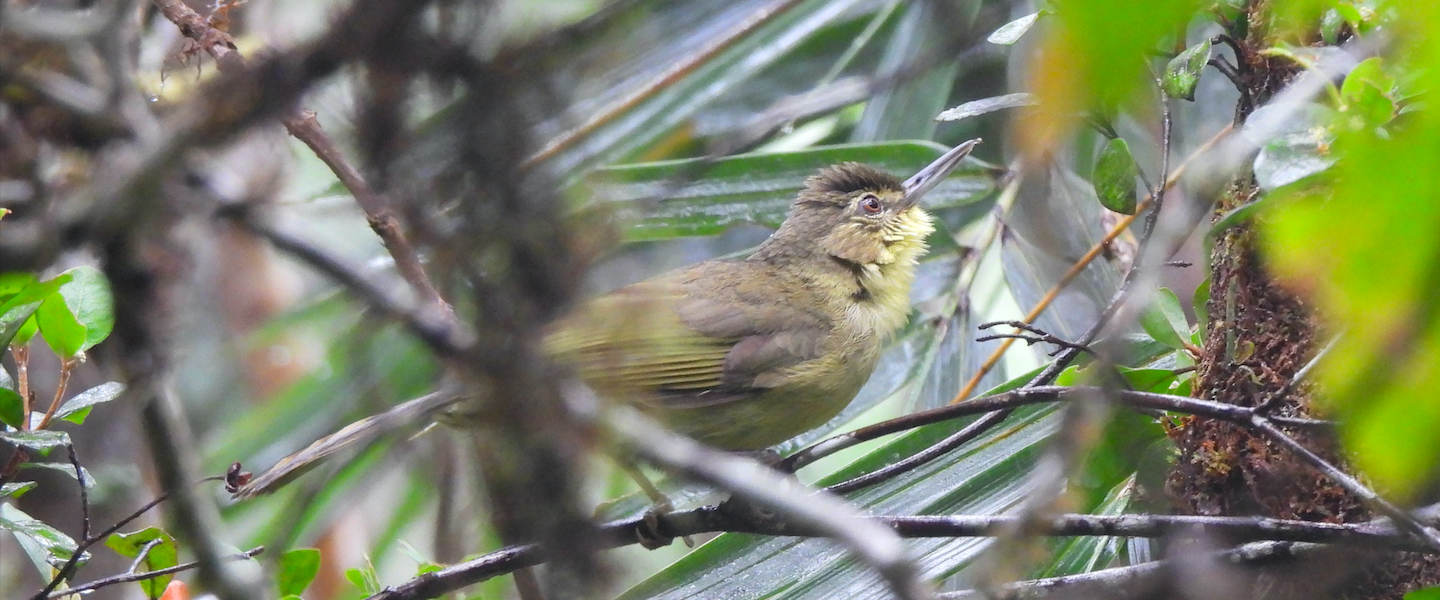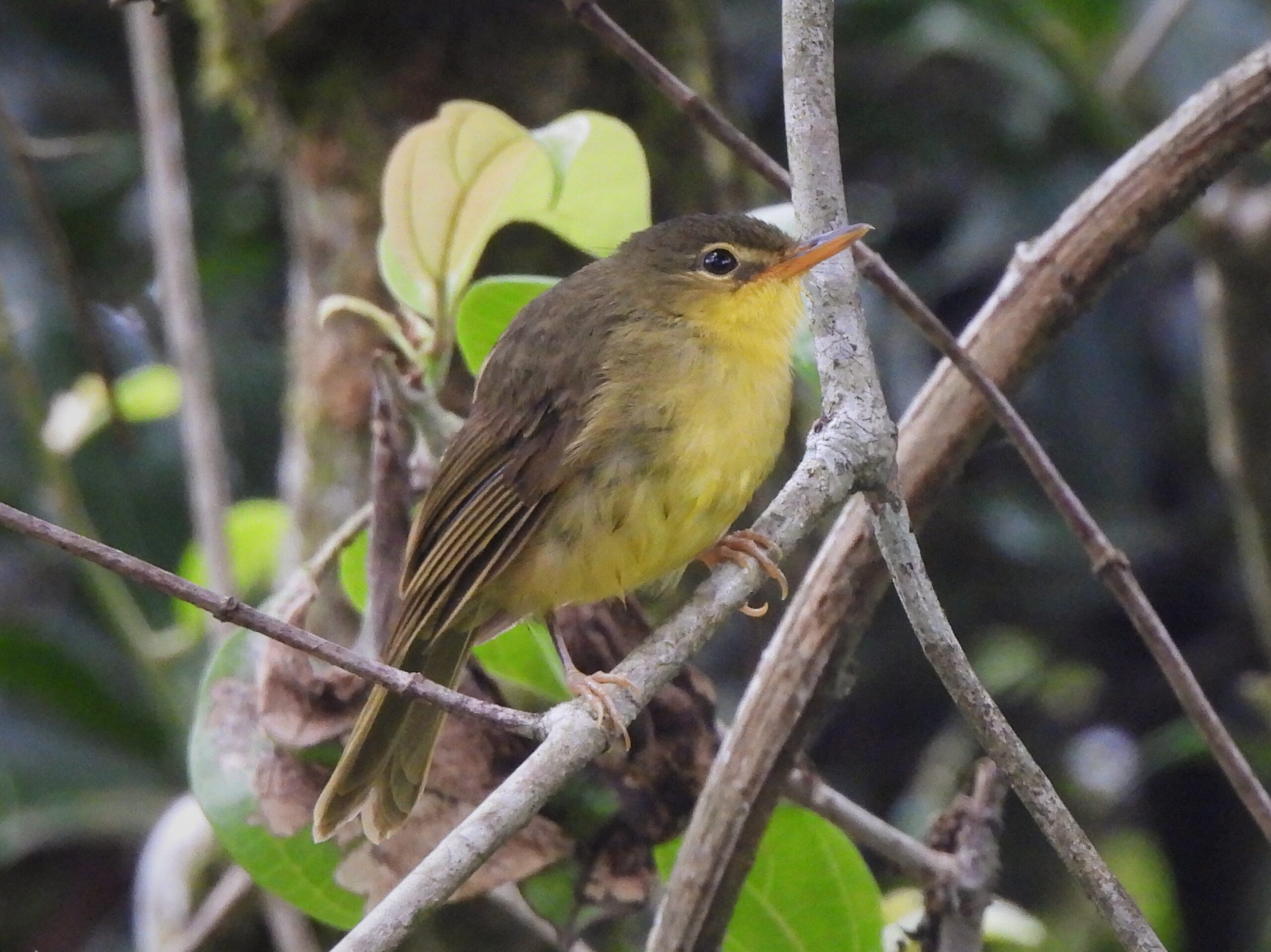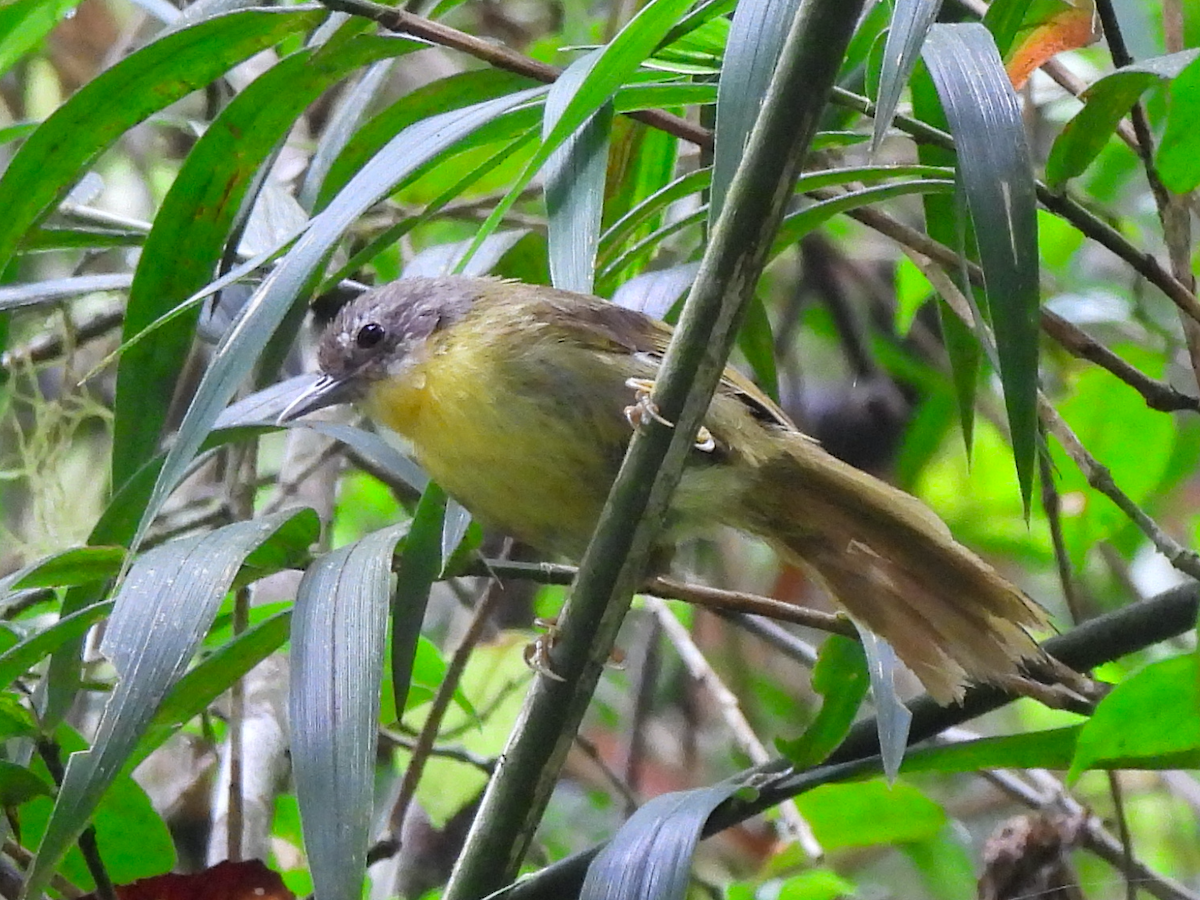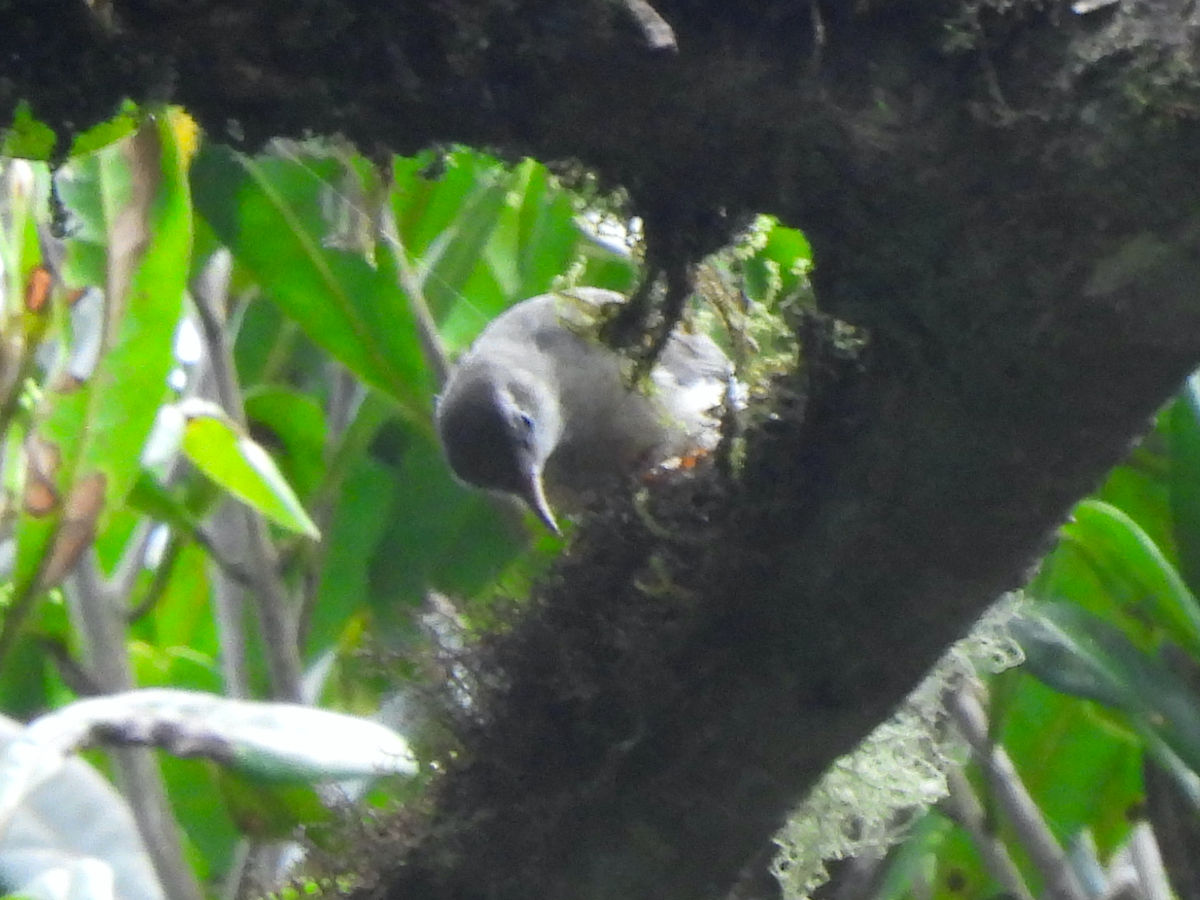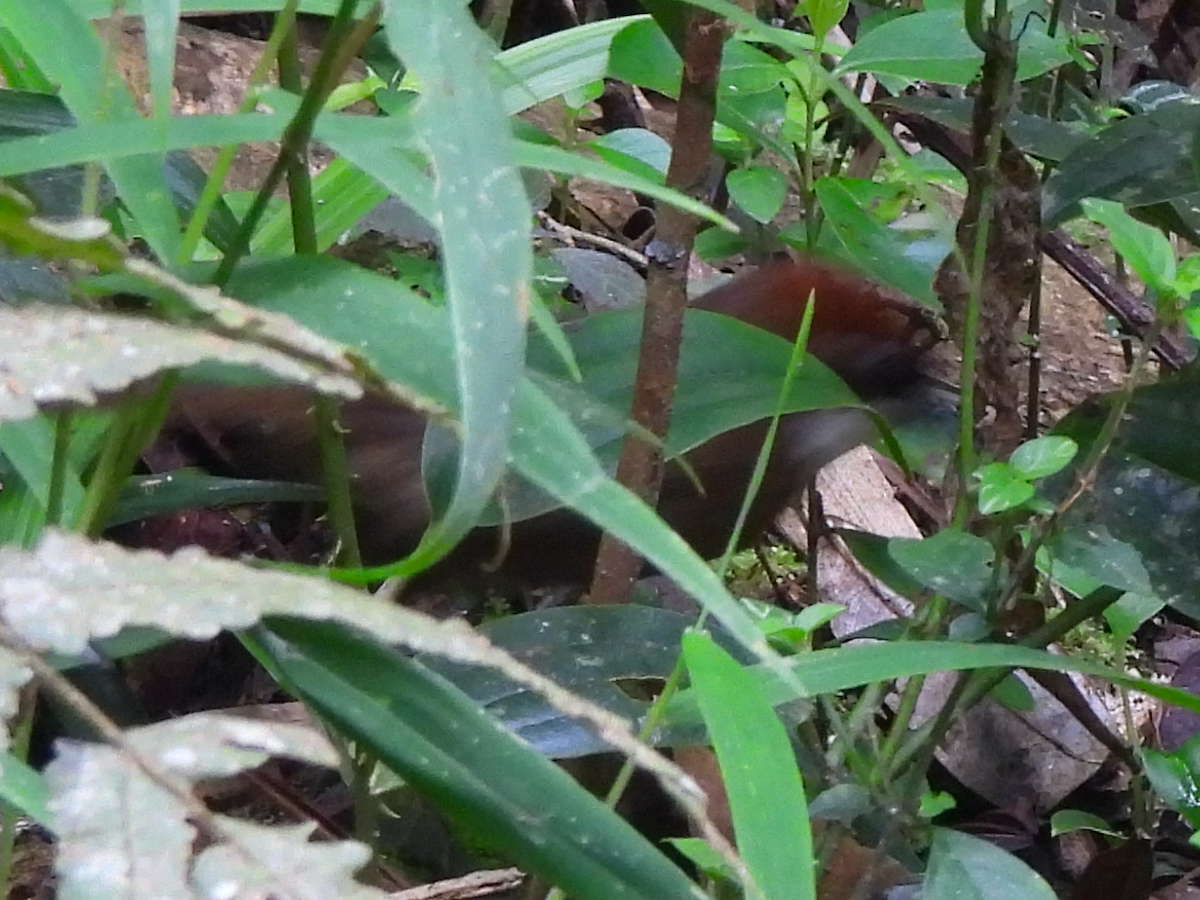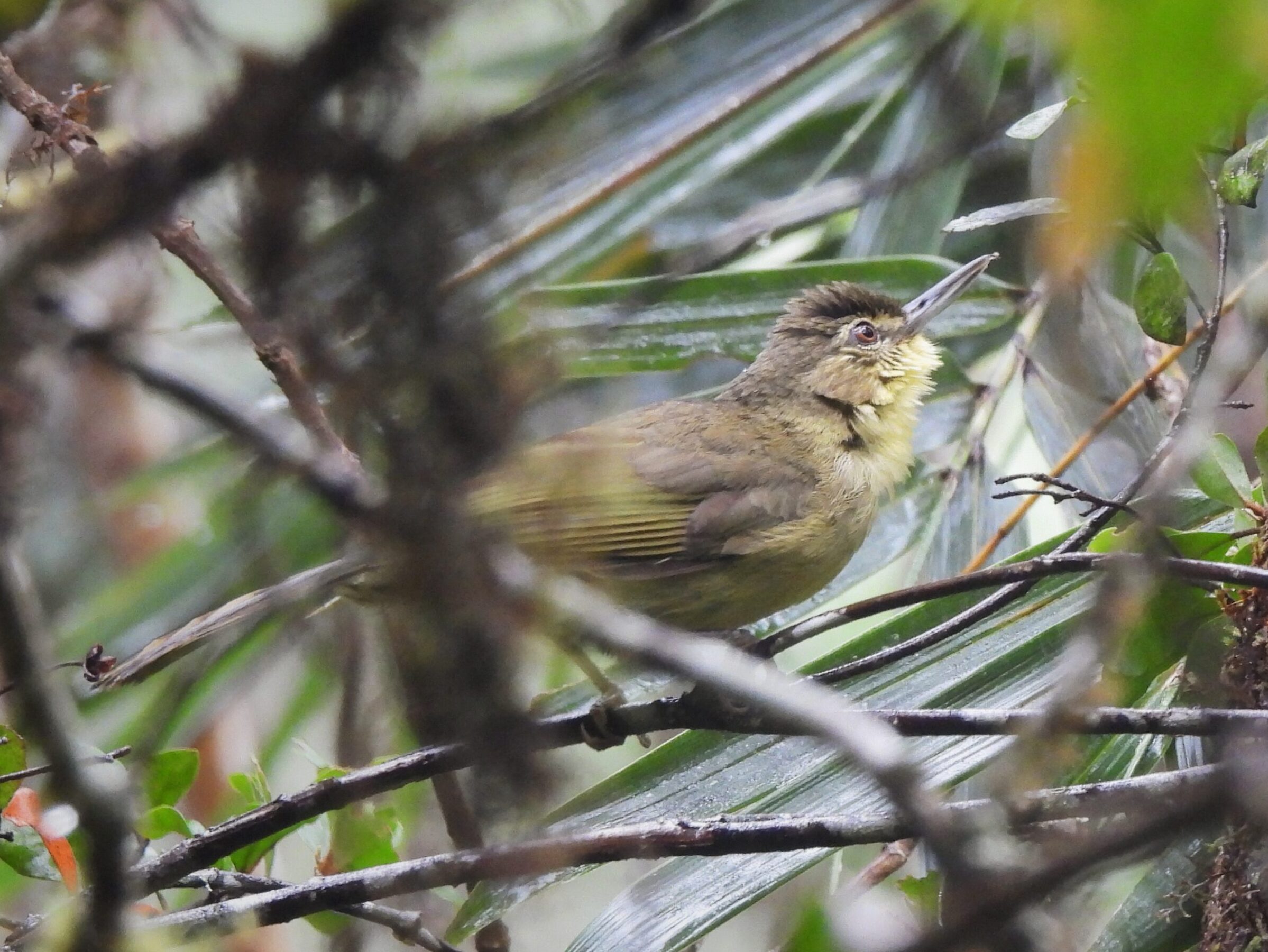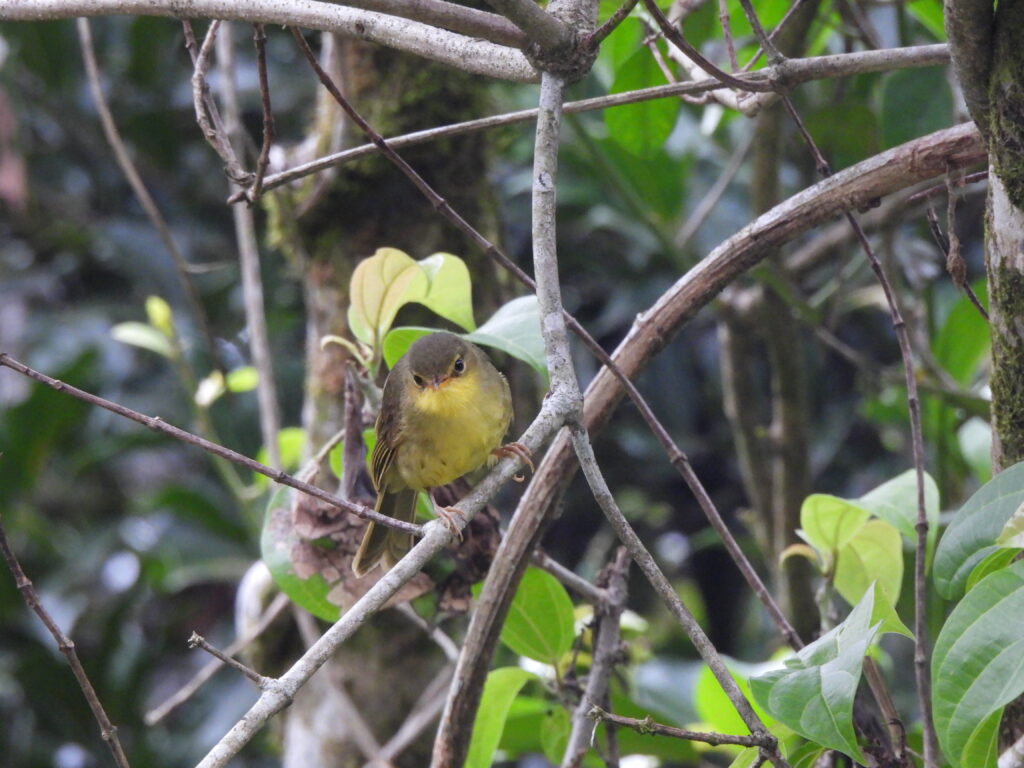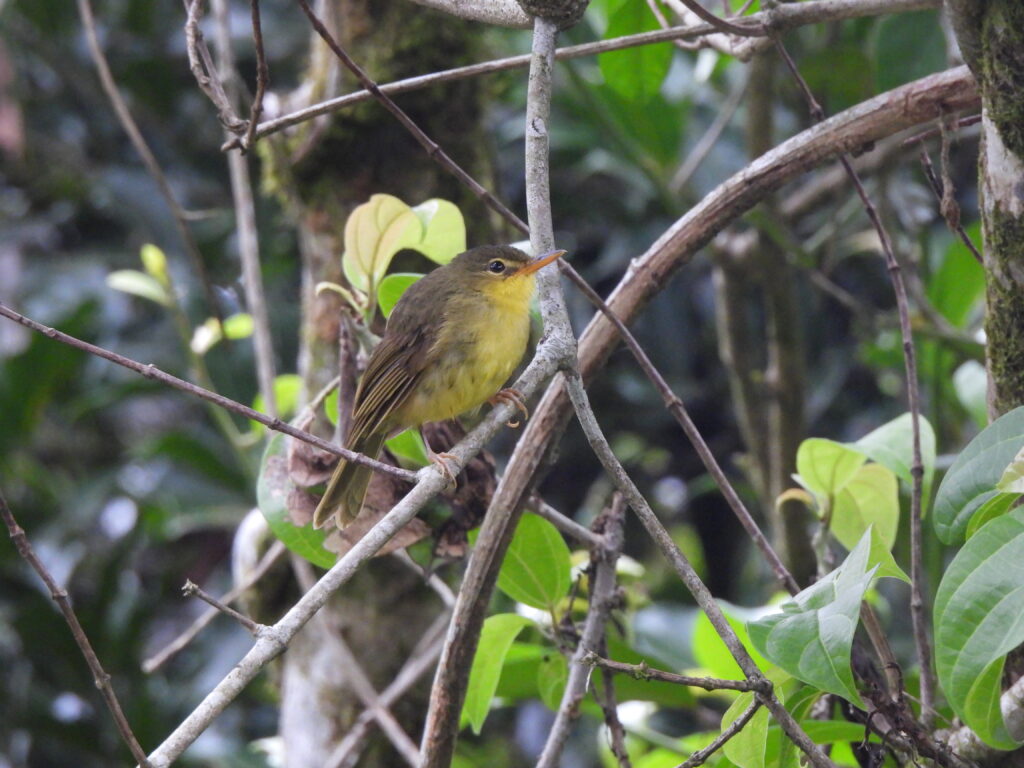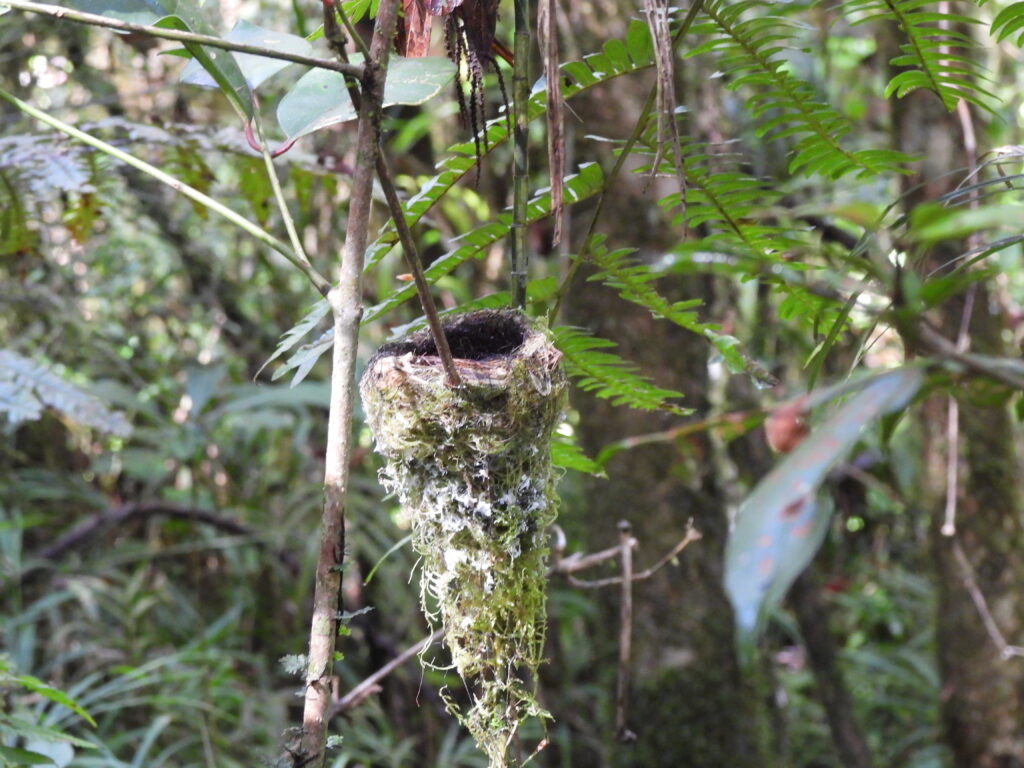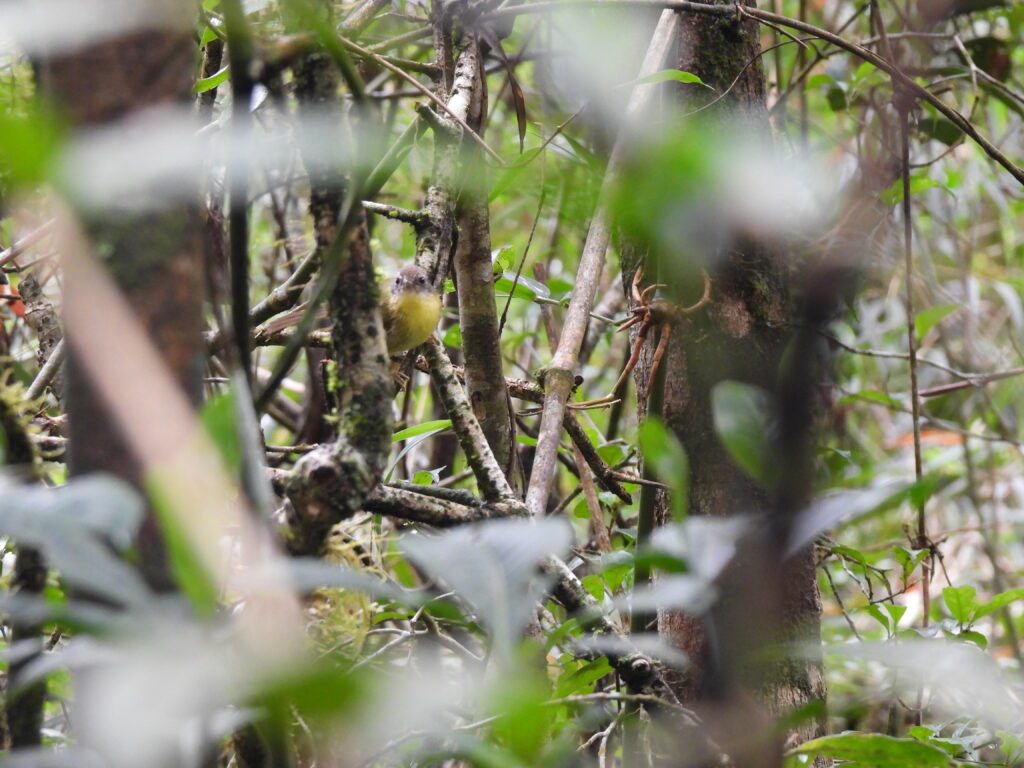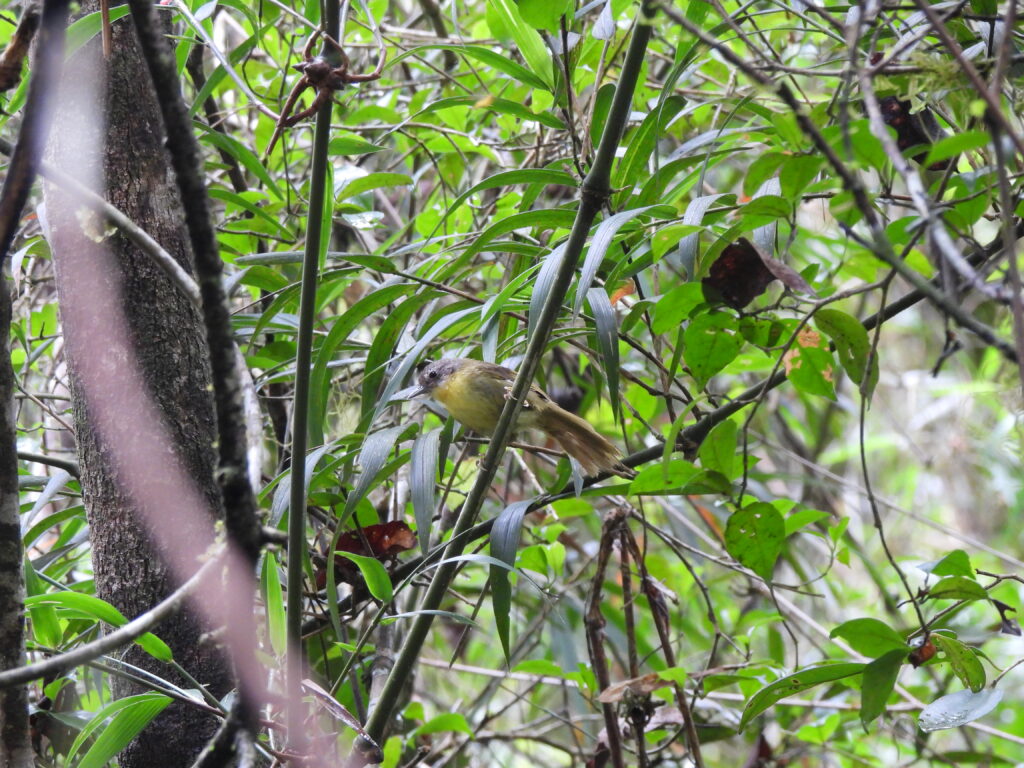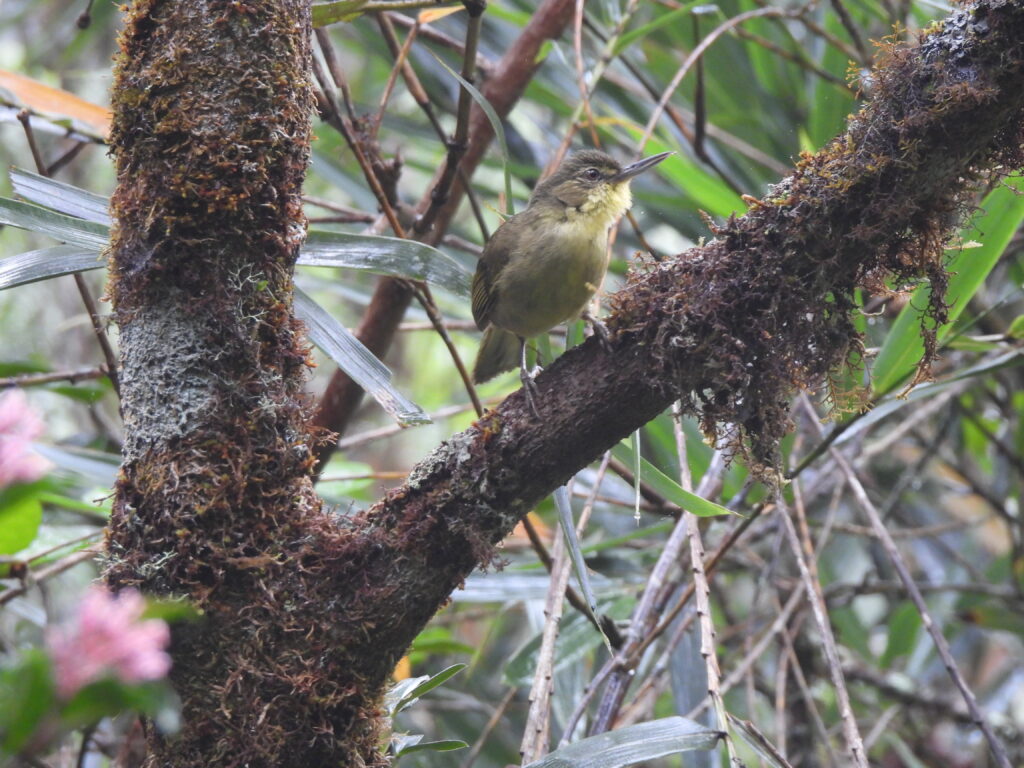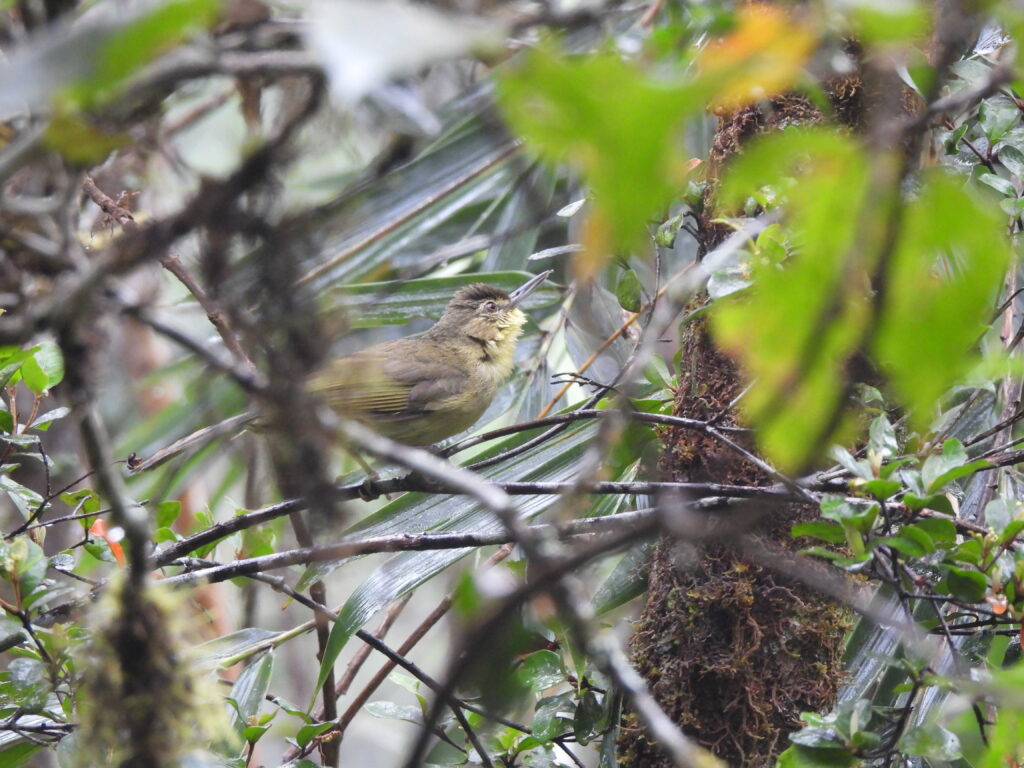The Malagasy warblers (family Bernieridae) is a family of birds belonging to the order Passeriformes. It is one of the five families endemic to Madagascar, along with the mesites, the cuckoo-roller, the ground rollers and the asities. These generally small, greenish forest-dwelling birds are among the least known birds of Madagascar. Two species were only described to Western science only at the end of 20th Century and one species was feared extinct until recently after no sightings for the previous 24 years.
The family comprises 11 species in 8 genera. Most species dwell on tropical rainforests, including those of genera Crossleyia (2 species), Xanthomixis (3 species), Hartertula (1 species), Randia (1 species), Cryptosylvicola (1 species), Oxylabes (1 species) and Bernieria (1 species), whereas genus Thamnornis (1 species) and one species of Xanthomixis are restricted to dry deciduous forest.
Spectacled tetraka
Xanthomixis zosterops
Relatively abundant in rainforests across eastern Madagascar, where it usually joins mixed-species foraging flocks. Bright yellow spectacles are their most distinctive feature. I have seen this species in Madagascar.
Wedge-tailed jery
Hartertula flavoviridis
Endemic to the moist forests of eastern Madagascar. Despite its name, it is not related with the true Madagascar jeries. Unlike other small tetrakas, this species mostly forages in the understory. I have encountered this species in Madagascar.
Rand’s warbler
Randia pseudozosterops
Endemic to lowland and mid elevation rainforests in Madagascar. Usually dwelling in the canopy, often best detected when it sings from an exposed perch. I have observed this species in Madagascar.
White-throated oxylabes
Oxylabes madagascariensis
Endemic to lowland and mid elevation rainforest of Madagascar. Unique for its overall rufous-brown plumage among a family of greenish birds. Skulks in the dense understory. I have briefly seen this species in Madagascar.
Long-billed bernieria
Bernieria madagascariensis
Well spread along rainforest and dry woodlands of Madagascar. It is the largest, most widespread and likely most abundant member of its family. I have observed this species in different areas of Madagascar.


